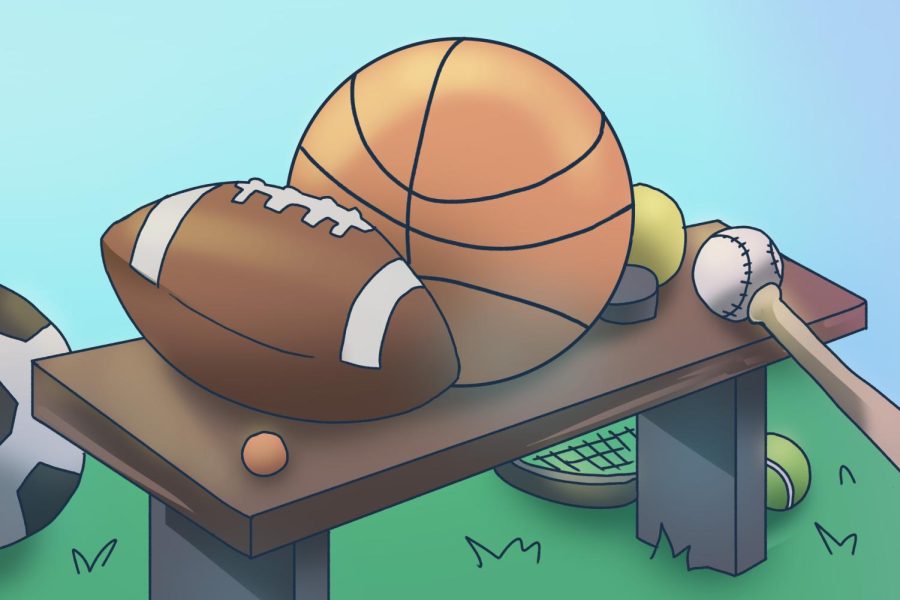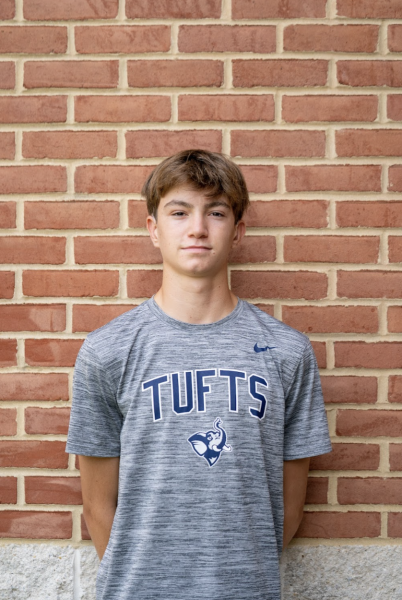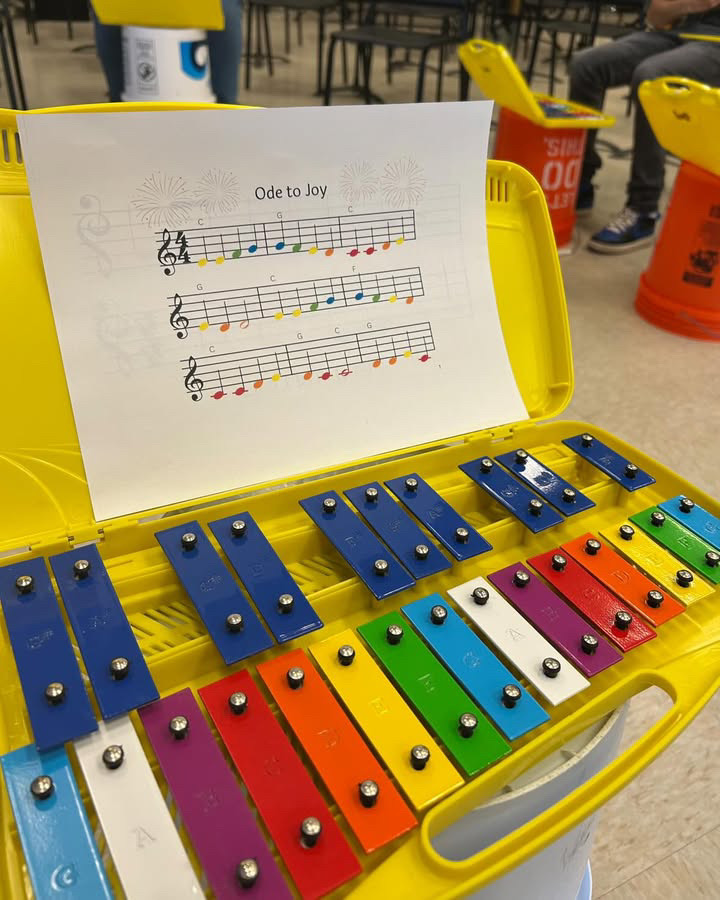Looking into Whitman athletes’ decisions about playing college sports
Deciding to play in college is not simple; numerous factors are vital in an athlete’s decision to enter the recruiting process.
June 14, 2023
It’s February 28, and the Vikings’ basketball team has just suffered a heartbreaking loss to the Wootton Patriots in the regional semifinal. The Vikings players, specifically the seniors, are visibly emotional following the loss. Once the players finish with the handshake line, they hug each other while the student section applauds one last time. With the sound of the final buzzer echoing in his mind, senior Landon Mulford takes a few seconds to get one last look at the court — a court that’s been home for the past two years. As he heads to the locker room one last time, a thought crosses his mind: This is the final time he will play in a Whitman uniform.
Reflecting on his rollercoaster of a season and the unforgettable memories he made, the debate to pursue collegiate basketball continues in his mind. On the one hand, basketball is a massive part of his life, and he can’t imagine a world without it, but on the other hand, playing collegiate basketball would likely mean attending a school that doesn’t fit him best.
Numerous talented Vikings have committed to collegiate athletic programs over the years, and the class of 2023 is no exception. This year’s graduating class features 17 athletes committed to playing their sport at the college level. However, deciding to play in college is not simple; numerous factors are vital in an athlete’s decision to enter the recruiting process.
For some athletes, choosing a college that fits their personality best is their top priority, even if it means they can’t play their sport collegiately. For Mulford, the starting center for the boys’ varsity basketball team, none of the colleges that pursued him provided the environment he needed to thrive.
“I knew from the beginning that I wasn’t going to be able to play at a school that fits me academically and socially,” Mulford said.
While playing college basketball sounds appealing, the sport is a significant time commitment that frequently interferes with student-athletes’ social and academic lives, Mulford said.
As college athletes try to balance school, sports and relationships with friends and family, their day-to-day lives can quickly become unmanageable. In a study conducted by the NCAA, 30% of surveyed student-athletes felt “extremely overwhelmed,” and 25% reported that they were “mentally exhausted.” For many prospective college athletes, the constant pressure and high expectations within college sports are a deterring factor in their decision.
“What interested me was getting to play basketball and be a part of a team, which is something I’ve always enjoyed,” Mulford said. “What turned me away is the huge time commitment even at the D3 level, which isn’t necessarily a bad thing, but wasn’t something I wanted to lock into.”
Still, many athletes put the downsides behind them and commit to playing sports in college like senior Charlotte Shapiro, who will be playing soccer at Washington University in St. Louis in the fall.
Shapiro first began considering college soccer when she saw several of her club teammates committing to colleges. Her desire to play college soccer was ultimately fueled by the community aspect of college sports and the opportunity to compete and push herself at an even higher level than in high school. When Shapiro entered the recruiting process, she looked for a school that fits her personality and had prestigious academics.
“My biggest criteria was academics,” Shapiro said. “I wanted to use athletics to get myself into a higher academic institution.”
There are some intimidating aspects of playing college sports, such as the constant pressure to perform well, but those struggles are all part of being an athlete, Shapiro said.
For many prospective college athletes struggling to find a school that fits them both on and off the field, walking onto a team is another appealing option. Senior Luke Kullback — a four-year varsity soccer player and two-year captain — found himself in such a situation.
Kullback had a small group of schools to choose from but ultimately decided not to commit. Instead, he contacted the Michigan soccer coach and now plans to walk on to the soccer team, he said.
“To be honest, I didn’t put in as much effort as I should’ve, so instead of having a lot of options, I was down to one or two,” Kullback said. “Instead I have a walk-on opportunity at Michigan […] I’ll be playing club in the fall, and then I’ll try to walk on in the spring.”
When student-athletes attempt to find the perfect fit for sports and academics, they enter a daunting recruiting process. Students looking to play in college usually start by emailing coaches and determining what they want to look for in a college. Once students get an idea of their criteria and which colleges are interested in them, they often visit those schools and frequently contact the coaches or staff. Once the athlete has evaluated all of their options, they make a final decision on which college they want to attend for the next four years.
Senior varsity basketball player Hunter Hausman is no stranger to this process. Hausman aspired to play college basketball since he was 14 years old. He credits his father — who played college soccer at the University of Maryland — for pushing him to become the player he is today and believing in his goal to play collegiately. Hausman described the recruiting process as enjoyable but daunting.
“It was a lot of fun, but it took a lot of time,” Hausman said. “It was a big process with multiple coaches texting me every day. It feels good but, at the same time, it’s pretty stressful dealing with all the coaches pressuring you to make a decision.”
With the number of different opportunities that came with each school, Hausman wanted to make sure the one he was committing to was the right one for him. After evaluating several options, he ultimately decided to commit to Keiser University in Palm Beach, Florida.
“I chose Keiser because they gave me more attention than any other school the second I stepped onto their campus, the school is in a convenient location and I liked the overall vibe,” Hausman said.
It’s often complicated to make a confident final decision in the wake of so many factors that affect an athlete’s recruiting process. However, not committing to a school doesn’t mean an athlete has to drop their sport since most colleges offer intramural and club sports where students can continue to play their sport for fun.
Mulford believes that high school athletes facing indecision about whether to play sports in college should at least explore their options, he said.
“Even if you’re unsure, there’s no harm in reaching out and getting yourself involved,” Mulford said. “The worst that can happen is a coach says no.”











